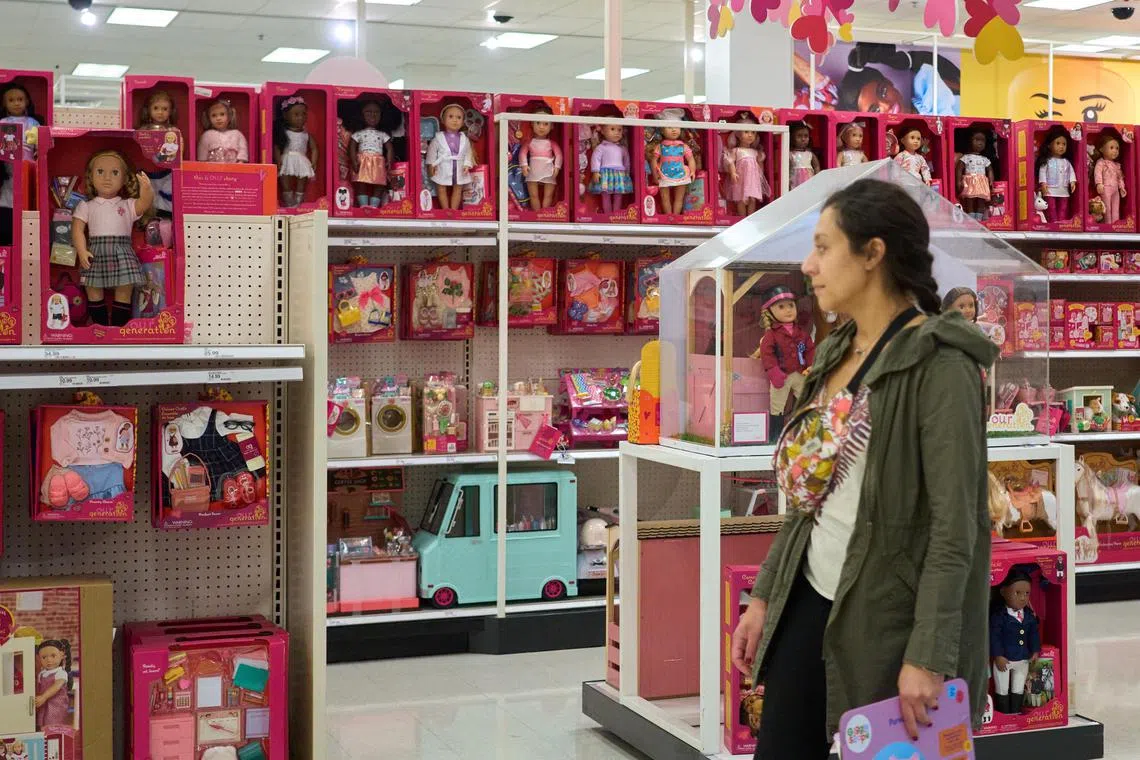US inflation comes in softer than forecast for a third month
Sign up now: Get ST's newsletters delivered to your inbox

In the 12 months through April, the US CPI climbed 2.3 per cent, slightly lower than economists' forecast.
PHOTO: EPA-EFE
Follow topic:
WASHINGTON - US inflation rose by less than forecast in April amid tame prices for clothing and new cars, suggesting little urgency so far by companies to pass along higher tariffs.
The consumer price index (CPI), excluding the often volatile food and energy categories, increased 0.2 per cent from March, according to Bureau of Labour Statistics data out on May 13. Compared with April 2024, the core CPI rose 2.8 per cent, unchanged from the month prior.
The overall CPI advanced 0.2 per cent, and climbed 2.3 per cent on an annual basis.
The CPI report showed a pullback in airfares and hotels, suggesting weaker demand for discretionary services. Used cars, trucks and apparel also fell. Grocery prices declined for the first time in almost a year, including the biggest drop since 1984 in egg prices.
New car prices were flat, defying expectations of a tariff-induced pickup. However, prices of furniture and appliances – goods that are largely imported – jumped.
While the Trump administration’s tariffs are widely expected to boost inflation, companies may still be working their way through a massive stockpile of built-up inventory before resorting to raising prices.
Many tariffs were rolled back – including those on China after a temporary agreement was reached over the weekend – but US importers are still wrestling with higher trade costs and fear they could jump again when the pause is up.
The 90-day reprieve – a move that brought the combined 145 per cent US levies on most Chinese imports down to 30 per cent – suggests more mild price hikes could be in store. But should the catch-up period to restock supply create congestion at ports, that may actually lead to faster price increases in the CPI, according to Bloomberg Economics.
Treasuries extended a rally, the dollar fell and S&P futures pared earlier losses following the data.
Given the extreme uncertainty of how the tariffs will evolve and how they will ultimately impact the economy, the Federal Reserve is keeping interest rates on hold for the foreseeable future.
Many economists acknowledged that the pause with China lowers the risk of a US recession, but tariffs will still keep inflation well above the central bank’s target.
Companies from Nintendo to Procter & Gamble have suggested that they will try to pass on the cost of tariffs to consumers. However, the extent of their pricing power is unclear as demand slows.
Consumer spending in retail sales data – which largely captures outlays for goods – was probably flat in April, ahead of a report due on May 15.
While all eyes have been on the impact tariffs will have on goods prices, one of the key drivers of inflation in recent years has been housing costs – the largest category within services. Shelter prices picked up to a 0.3 per cent increase, led by rents. BLOOMBERG

